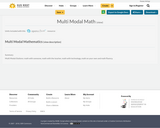
Multi Modal Stations: math with someone, math with the teacher, math with technology, math on your own and math fluency.
- Subject:
- Math
- Material Type:
- Activity/Lab
- Teaching/Learning Strategy
- Date Added:
- 10/22/2018

Multi Modal Stations: math with someone, math with the teacher, math with technology, math on your own and math fluency.
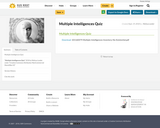
Multiple Intelligences Quiz
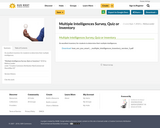
An excellent inventory for students to determine their multiple intelligences.
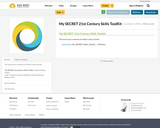
This tool kit was created by Sun West Colony Schools.

Students explore naming conventions in digital and non-digital settings then choose and explain specific names and profiles to represent themselves online.

A wealth of online personality tests for free. These may be some of the tests you wish to consider doing with older students as part of their learner profiles. Consider doing the Jungian Scales/Myers Briggs. The brain dominance, temperament quiz and memory test are also very interesting.

Resources include:
*What is PBL?
*Planning a Unit (forms for elementary, middle school and high school)
*6 As of PBL Design
*Structure of PBL
*Culture and PBL
*21st Century Skills
& More

This site is a good support for parents wanting to learn more about 21st Century Learning. There are videos and links to information including Innovations for Parents.
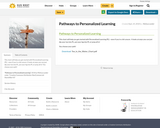
This chart will help you get started with Personalized Learning (PL) - even if you're a bit unsure. It looks at ways you can just dip your toe into PL, put your leg into PL or jump all in!
You choose your path!
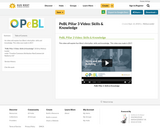
his video will explain Sun West's third pillar: skills and knowledge. This video was made in 2017.
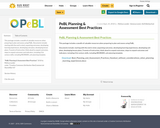
This package includes a wealth of valuable resources when preparing to plan and assess using PeBL.
Documents include: starting with the end in mind, unpacking outcomes, developing learning experiences, developing unit plans, developing lesson plans, 9 events of instruction, think aloud to unpack outcomes, steps to unpack outcomes and indicators, including 21st century skills, including REORDER, unit planning template.

Get in Your Element With Bloom's Taxonomy
Check out our Bloom?s Taxonomy Periodic Table featuring 6 different groups of ?elements? that reveal fun and challenging activities corresponding to Bloom?s Taxonomy verbs.
Simply mouse over each ?element? to see the suggested activity pop up. Each box presents a suggestion for an activity that you can either use as is or create your own variation of.
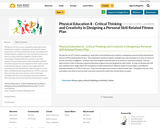
My plan for my 21st century competency dealt with critical thinking and creativity in designing a personal skill related fitness plan in my Physical Education 8 class. The assignment I had the students complete was a personal plan in an area, of a sport or activity, that they struggled in. Students were encouraged to develop skills in an activity or sport they enjoyed. This was determined in order to develop a physical education program that was designed for their needs. In order to develop this skill plan, students were taught about the components of skill related fitness, different types of muscle fibers, and different planning methods (i.e. F.I.T.T.) in class one. They were then given two classes to work on their plan. Throughout the year, they were given class time to work on their own plans and practice what they had put down on paper.
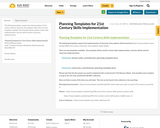
The following templates support the implementation of 21st century skills for character and academic skills.
There are two templates available. One template will be used for school-wide implementation, and one will be used for classroom implementation.
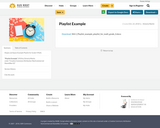
Shapes and Space Example Playlist for Grade 4 Math.
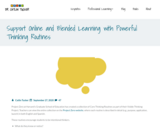
Project Zero at Harvard’s Graduate School of Education has created a collection of Core Thinking Routines as part of their Visible Thinking Project. Teachers can view the entire collection on the Project Zero website (https://pz.harvard.edu/thinking-routines#CoreThinkingRoutines), where each routine is described in detail (e.g., purpose, application, launch) in both English and Spanish.
These routines encourage students to be intentional thinkers.
What do they know or notice?
What is their perspective or position on an issue or idea?
How can they support their position or thinking?
What do they wonder? What are they confused about?
How has their thinking changed? What caused that change?
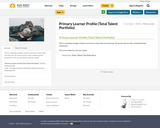
This is a template younger students can learn to share their learning style, MI, group style etc after completing their inventories.
This can be edited to suit your needs!

This website has been used to develop a number of open-source psychological tests. All are availible under a creative commons licence. This is the full list of such tests, not all have been finalized:
Open Extended Jungian Type Scales (documentation) * Myers Briggs
Open Hemispheric Brain Dominance Scale (documentation)
Open Enneagram of Personality Scales
Exposure Based Face Memory Test
For other open source measures, try the International Personality Item Pool.
These are some options you may want to consider for student learner profiles for older students - especially the Jung/Myers Briggs and Enneagram scales.
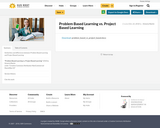
Similarities and differences between Problem Based Learning and Project Based Learning
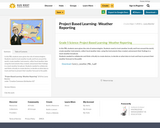
In this PBL students were given the role of meteorologists. Students need to track weather locally and from around the world, create weather instruments, collect local weather data using the instruments they created, and present their findings in a mock weather broadcast.
Students needed to collaborate and think critically to create devices, to decide on what data to track and how to present their weather forecast to the public